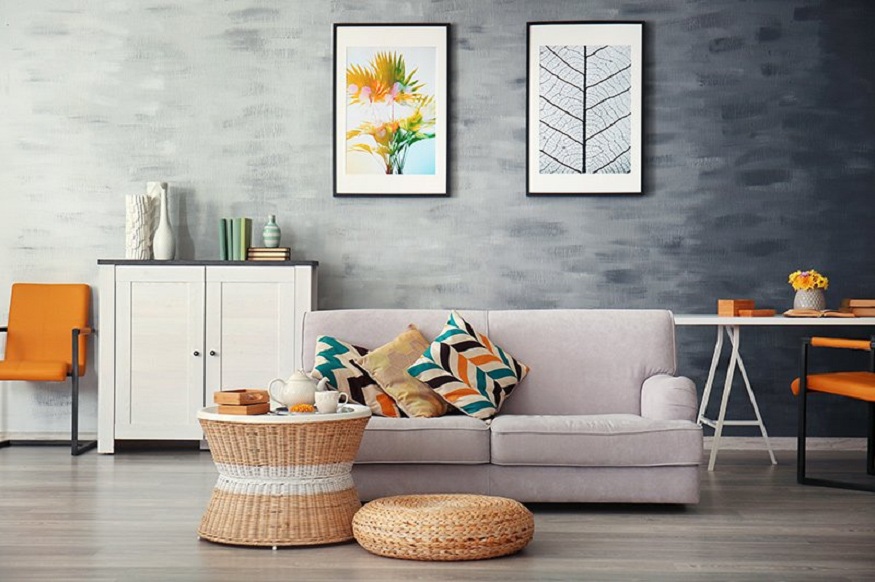 If you’re planning to give your home a makeover, texture painting on walls is an excellent way to add depth, personality, and style to your space. Unlike regular paint, textured paint offers a unique finish that creates visual interest and brings character to any room. Before you dive into this exciting world of wall design, here’s everything you need to know about texture painting on walls.
If you’re planning to give your home a makeover, texture painting on walls is an excellent way to add depth, personality, and style to your space. Unlike regular paint, textured paint offers a unique finish that creates visual interest and brings character to any room. Before you dive into this exciting world of wall design, here’s everything you need to know about texture painting on walls.
What is Texture Painting?
Texture painting is a technique that uses specialised tools and paints to create patterns, designs, or raised effects on walls. It’s a creative way to enhance your interiors and make them stand out. From rustic stone-like finishes to sleek metallic sheens, texture painting on walls allows you to experiment with various looks.
Benefits of Texture Painting on Walls
- Aesthetic Appeal: Textured walls elevate the overall look of your home by adding dimension and personality. They can make a room feel more dynamic and stylish.
- Covers Imperfections: Textured paint effectively hides cracks, dents, or uneven surfaces, making it an excellent choice for older homes.
- Durability: Textured walls resist wear and tear, ensuring they stay beautiful for a long time.
- Versatility: Whether you prefer modern, traditional, or eclectic styles, texture painting on walls can be customised to match your taste.
Types of Texture Paint Finishes
Before starting, it’s essential to understand the different types of finishes available for texture painting on walls. Here are a few popular ones:
- Stucco Finish: Gives walls a rustic, earthy feel, perfect for traditional spaces.
- Sand Texture: Provides a gritty, natural look that works well in casual settings.
- Popcorn Texture: Adds a vintage charm commonly used for ceilings.
- Metallic Finish: This creates a luxurious, reflective surface for accent walls.
- Comb Texture: Produces patterns like waves or stripes using comb-like tools.
- Knockdown Texture: Offers a subtle, understated look with a slightly uneven surface.
Things to Consider Before Starting
- Wall Condition: Assess the condition of your walls. Texture painting is excellent for covering imperfections, but a severely damaged wall may require repairs before starting.
- Room Size: For smaller rooms, stick to light colours and subtle textures to avoid cramming the space. In larger rooms, bolder textures and darker shades work beautifully.
- Lighting: How light interacts with textured walls can greatly affect the look. Natural light enhances textures, while artificial lighting can create dramatic effects.
- Budget: Texture painting can be more expensive than regular paint due to the materials and labour involved. Plan your budget accordingly.
- Theme and Style: Consider your home’s existing décor and overall theme to ensure the texture complements the space.
Required Tools and Materials
For texture painting on walls, you’ll need the following tools and materials:
- Texture paint (pre-mixed or powder form)
- Trowels or putty knives for application
- Sponges or rollers for creating patterns
- Comb tools or brushes for intricate designs
- Drop cloths and painter’s tape to protect floors and trims
- Primer to prepare the wall surface
Maintenance Tips for Textured Walls
Textured walls are relatively low-maintenance, but a little care goes a long way in keeping them looking fresh.
- Dusting: Use a soft brush or vacuum cleaner attachment to remove dust.
- Cleaning: Use a damp cloth and mild soap for stains or spots. Avoid abrasive scrubbing, as it may damage the texture.
- Touch-Ups: Keep some leftover paint for touch-ups, as matching texture paint later can be tricky.
Where to Use Texture Painting on Walls
Texture painting is versatile and can be used in various areas of your home:
- Living Room: Create a statement wall to become the centrepiece of your space.
- Bedroom: Add a soft, soothing texture to enhance the room’s cosiness.
- Dining Room: Experiment with bold textures to make the space feel elegant and inviting.
- Hallways: Use subtle textures to add interest without overwhelming the space.
Conclusion
Texture painting on walls is a creative and practical way to add character, depth, and elegance to your home. With the right preparation and tools, you can transform any plain wall into a stunning design feature. Whether you choose to do it yourself or hire a professional, the results will leave a lasting impression.



